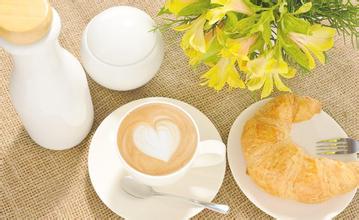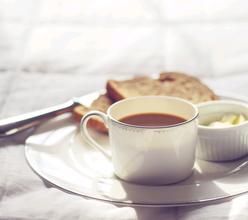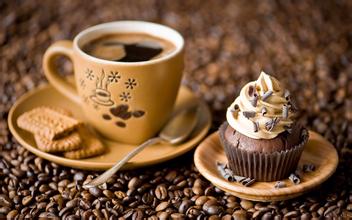Types and practices of coffee lattes
Latte is the most familiar espresso item in Chinese. It is fancy coffee with equal proportion or even more milk added to the thick and full-bodied Espresso. With the warm seasoning of milk, the original sweet and bitter coffee becomes smooth and sweet, so that even those who are not used to drinking coffee can not compete with the fragrant taste of latte.
Like cappuccino, lattes are suitable for drinking in the morning because they contain a lot of milk. Italians also like to use it to warm their stomachs for breakfast. In the Italian kitchen in the morning, coffee and milk are usually brewed on the sunlit stove. Italians who drink lattes like milk rather than espresso, and only Espresso can bring unforgettable taste to ordinary milk.
[Italian latte] requires a small cup of Espresso and a cup of milk (150,200ml). Lattes contain more milk and less coffee, which is very different from Cappuccino. The latte is as simple as pouring nearly boiling milk into a freshly made espresso. In fact, there is no fixed rule on how much milk is added, and it can be freely mixed according to individual taste.
If you add some frothy cold milk to the hot milk, it becomes an American latte. Starbucks American lattes are made in this way, with espresso at the bottom, milk heated to 65 to 75 ℃ in the middle, and cold milk foam of no more than half a centimeter.
If you do not put hot milk, but directly decorate two tablespoons of milk foam on the Italian espresso, it becomes the Machi Hadot Coffee called Espresso Macchiato by the Italians.
The most complete introduction of coffee types and the practice of all kinds of coffee in history
Caf é Au Lait
The French are the most enthusiastic proponents of Ole Coffee. You will see the round Orei Cup on the breakfast table in France, which is the source of their good mood for the day. Interestingly, compared with all the coffee cups, the cup used by the French to hold Ole coffee is probably the largest.
Ole Coffee is also very simple: pour a cup of espresso and a large cup of hot milk into a large cup at the same time, and finally put two tablespoons of whipped cream on the surface of the liquid.
Ole Coffee can be regarded as an European latte, which is quite different from American latte and Italian latte. The biggest difference between Oulei coffee and American latte and Italian latte is that it requires milk and espresso to be injected into the cup together. Milk and coffee meet at the first time, resulting in a feeling of leisure and freedom.
Many people don't understand the relationship between latte and Olei. In fact, latte is Italian New year milk coffee, steaming milk in the way of machine steam, while Oulei is French coffee. They boil milk over fire and taste the same warm and smooth.
Practice: use utensils and materials. The amount of deep-roasted coffee beans is moderate. Moderate amount of milk (coffee / fresh milk ratio: 1:1)
1. Soak the cup (warm cup) in hot water to raise the temperature, then pour out the excess water for use.
two。 Grind the deep-roasted coffee beans, pour the coffee powder into the filler, flatten the coffee powder with a press stick, then buckle the filler to the espresso machine extraction port, and extract Espresso (coffee / fresh milk at 1:1).
3. Take the right amount of milk and put it under the steam nozzle of the espresso machine to steam it into hot milk.
4. Pour the steamed milk into the cup.
5. Shake the cup up and down to make the foam rise
6. Finally, slowly pour the Espresso into the cup.

Important Notice :
前街咖啡 FrontStreet Coffee has moved to new addredd:
FrontStreet Coffee Address: 315,Donghua East Road,GuangZhou
Tel:020 38364473
- Prev

What are the benefits of drinking coffee regularly? American coffee machine secondary extraction
1. Coffee contains certain nutrients. Nicotinic acid in coffee contains vitamin B, which is higher in roasted coffee beans. And there are free fatty acids, caffeine, tannic acid and so on. two。 Coffee is good for the skin. Coffee can promote metabolic function, activate digestive organs, and has a great effect on constipation. Taking a bath with coffee powder is a kind of thermotherapy, which has the effect of losing weight. 3. There is coffee.
- Next

What coffee making methods should be paid attention to when making coffee?
Step / method 1 grind the coffee beans ~ put the beans in the coffee bean grinder ~ the amount is calculated according to the number of people drinking ~ the coffee machine should have a measuring spoonful ~ one spoonful of beans to boil a cup ~ no more than 4 cups ~ otherwise it will not smell so good ~ 2 coffee filter paper open ~ put in the coffee machine filter ~ coffee filter paper can slow down the coffee filter speed ~ make the coffee more fragrant and purer ~ then put the ground coffee powder into the coffee filter
Related
- Does Rose Summer choose Blue, Green or Red? Detailed explanation of Rose Summer Coffee plots and Classification in Panamanian Jade Manor
- What is the difference between the origin, producing area, processing plant, cooperative and manor of coffee beans?
- How fine does the espresso powder fit? how to grind the espresso?
- Sca coffee roasting degree color card coffee roasting degree 8 roasting color values what do you mean?
- The practice of lattes: how to make lattes at home
- Introduction to Indonesian Fine Coffee beans-- Java Coffee producing area of Indonesian Arabica Coffee
- How much will the flavor of light and medium roasted rose summer be expressed? What baking level is rose summer suitable for?
- Introduction to the characteristics of washing, sun-drying or wet-planing coffee commonly used in Mantenin, Indonesia
- Price characteristics of Arabica Coffee Bean Starbucks introduction to Manning Coffee Bean Taste producing area Variety Manor
- What is the authentic Yega flavor? What are the flavor characteristics of the really excellent Yejasuffi coffee beans?

